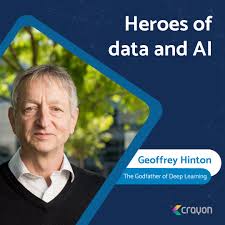
The answer is a resounding yes. Robotic surgery was introduced for the first time in 1967. The technology is now widely used. While it can help surgeons with a variety of operations, it has some significant drawbacks. The potential for unexpected complications is the first issue. Even simple surgeries can cause unexpected problems, and surgeons have to weigh the risks and benefits of each procedure. While robotic surgery may not be able to replace surgeons any time soon, it may help them improve their skills. John McCarthy, the father artificial intelligence (AI) and the creator the Lisp programming interface is the inventor.
John McCarthy
Robotic surgery was a new concept back in 1958. Dr. John McCarthy, MIT, was one of the pioneers. McCarthy created LISP, the first symbolic computing language in 1958. It is still used today in many artificial Intelligence applications. His work on commonsense reasoning and human-level AI were honored with the Turing Award. In 1990, he was awarded the National Medal of Science. John McCarthy's research has helped to transform medicine. He's also the father in robotic surgery.

John McCarthy is the father artificial intelligence
John Patrick McCarthy, an Irish immigrant and part time computer science icon, was John Patrick McCarthy before he became a household brand. He died at his California residence from a cardiac arrest on Oct. 24, 2011. His most notable achievements include the creation of the robotic arm and other artificial Intelligence tools that aid surgeons in performing surgery. McCarthy was the son a longshoreman, and an Irish national. McCarthy was raised as an atheist and became an early advocate of science. His life was full of difficulties. His childhood illness meant he missed a lot school but he still managed enough to earn enough credits to be able to graduate from college in California. It was also a time of better health.
Silver Falcon
Intuitive Surgical is an innovator of computerized instruments in the MIS. The Silver Falcon patents were licensed to them by the company. This seven-degree of freedom device was invented by Akhil M. Madhani, MIT Mechanical Engineer, and Gunter Niemeyer at Stanford Research Institute. Madhani's doctoral thesis aimed to improve the dexterity and efficiency of endoscopic surgery by using teleoperated robot arms.
Lindinburg surgery
The Lindinburg operation was successful thanks to advanced technology and tele-surgeons. The New York-based surgical group operated on the patient using high speed telecommunications technology and high-speed service. The robotic surgery used Zeus to help surgeons in Strasbourg perform the procedure on the patient in New York. This feat has set the stage for future telesurgery.
Robotic surgery is a shared-controlled process
Robotic surgery can be done in a collaborative controlled manner. One surgeon controls the robotic arms via a console. This allows him or her to remotely view the surgical field and operate the instruments. The robotic arms' tools are adjusted by the second surgeon. They can then be inserted through tiny incisions in your body. Once the instruments have been installed, the surgeon can start operating. During the procedure, the patient is not aware that the robotic arms are in place.

RoboDoc
RoboDoc, an active robotic surgical system developed by researchers from MIT and IBM in 1996. The robot responds to the surgeon's commands, and is able to understand an IBM language. The system can operate either independently or together with the surgeon. It can perform a variety of operations, from orthopedic procedures to gynecological procedures. It can also handle complex thoracic surgeries, such as an angioplasty.
FAQ
What is AI used today?
Artificial intelligence (AI), is a broad term that covers machine learning, natural language processing and expert systems. It's also known by the term smart machines.
Alan Turing was the one who wrote the first computer programs. He was interested in whether computers could think. In his paper, Computing Machinery and Intelligence, he suggested a test for artificial Intelligence. The test seeks to determine if a computer programme can communicate with a human.
John McCarthy, in 1956, introduced artificial intelligence. In his article "Artificial Intelligence", he coined the expression "artificial Intelligence".
There are many AI-based technologies available today. Some are simple and straightforward, while others require more effort. They range from voice recognition software to self-driving cars.
There are two major types of AI: statistical and rule-based. Rule-based relies on logic to make decision. For example, a bank account balance would be calculated using rules like If there is $10 or more, withdraw $5; otherwise, deposit $1. Statistics are used to make decisions. A weather forecast might use historical data to predict the future.
Who is the current leader of the AI market?
Artificial Intelligence is a branch of computer science that studies the creation of intelligent machines capable of performing tasks normally performed by humans. It includes speech recognition and translation, visual perception, natural language process, reasoning, planning, learning and decision-making.
There are many kinds of artificial intelligence technology available today. These include machine learning, neural networks and expert systems, genetic algorithms and fuzzy logic. Rule-based systems, case based reasoning, knowledge representation, ontology and ontology engine technologies.
The question of whether AI can truly comprehend human thinking has been the subject of much debate. Deep learning technology has allowed for the creation of programs that can do specific tasks.
Google's DeepMind unit, one of the largest developers of AI software in the world, is today. Demis Hassabis was the former head of neuroscience at University College London. It was established in 2010. DeepMind developed AlphaGo in 2014 to allow professional players to play Go.
What are the benefits of AI?
Artificial Intelligence is an emerging technology that could change how we live our lives forever. It has already revolutionized industries such as finance and healthcare. It is expected to have profound consequences on every aspect of government services and education by 2025.
AI is already being used for solving problems in healthcare, transport, energy and security. The possibilities are endless as more applications are developed.
What is the secret to its uniqueness? It learns. Unlike humans, computers learn without needing any training. Instead of teaching them, they simply observe patterns in the world and then apply those learned skills when needed.
AI's ability to learn quickly sets it apart from traditional software. Computers are capable of reading millions upon millions of pages every second. They can recognize faces and translate languages quickly.
It can also complete tasks faster than humans because it doesn't require human intervention. It can even outperform humans in certain situations.
2017 was the year of Eugene Goostman, a chatbot created by researchers. Numerous people were fooled by the bot into believing that it was Vladimir Putin.
This is a clear indication that AI can be very convincing. Another benefit is AI's ability adapt. It can be trained to perform new tasks easily and efficiently.
Businesses don't need to spend large amounts on expensive IT infrastructure, or hire large numbers employees.
Where did AI come?
In 1950, Alan Turing proposed a test to determine if intelligent machines could be created. He believed that a machine would be intelligent if it could fool someone into believing they were communicating with another human.
The idea was later taken up by John McCarthy, who wrote an essay called "Can Machines Think?" John McCarthy published an essay entitled "Can Machines Think?" in 1956. He described in it the problems that AI researchers face and proposed possible solutions.
What is the latest AI invention
Deep Learning is the newest AI invention. Deep learning (a type of machine-learning) is an artificial intelligence technique that uses neural network to perform tasks such image recognition, speech recognition, translation and natural language processing. Google created it in 2012.
Google recently used deep learning to create an algorithm that can write its code. This was achieved by a neural network called Google Brain, which was trained using large amounts of data obtained from YouTube videos.
This enabled the system learn to write its own programs.
IBM announced in 2015 that they had developed a computer program capable creating music. Another method of creating music is using neural networks. These are known as NNFM, or "neural music networks".
AI is used for what?
Artificial intelligence is an area of computer science that deals with the simulation of intelligent behavior for practical applications such as robotics, natural language processing, game playing, etc.
AI is also referred to as machine learning, which is the study of how machines learn without explicitly programmed rules.
AI is often used for the following reasons:
-
To make our lives easier.
-
To do things better than we could ever do ourselves.
Self-driving vehicles are a great example. AI can do the driving for you. We no longer need to hire someone to drive us around.
How does AI work
Basic computing principles are necessary to understand how AI works.
Computers save information in memory. Computers use code to process information. The code tells computers what to do next.
An algorithm is a sequence of instructions that instructs the computer to do a particular task. These algorithms are typically written in code.
An algorithm can also be referred to as a recipe. An algorithm can contain steps and ingredients. Each step represents a different instruction. An example: One instruction could say "add water" and another "heat it until boiling."
Statistics
- More than 70 percent of users claim they book trips on their phones, review travel tips, and research local landmarks and restaurants. (builtin.com)
- The company's AI team trained an image recognition model to 85 percent accuracy using billions of public Instagram photos tagged with hashtags. (builtin.com)
- According to the company's website, more than 800 financial firms use AlphaSense, including some Fortune 500 corporations. (builtin.com)
- While all of it is still what seems like a far way off, the future of this technology presents a Catch-22, able to solve the world's problems and likely to power all the A.I. systems on earth, but also incredibly dangerous in the wrong hands. (forbes.com)
- That's as many of us that have been in that AI space would say, it's about 70 or 80 percent of the work. (finra.org)
External Links
How To
How to build an AI program
You will need to be able to program to build an AI program. Many programming languages are available, but we recommend Python because it's easy to understand, and there are many free online resources like YouTube videos and courses.
Here's how to setup a basic project called Hello World.
To begin, you will need to open another file. This is done by pressing Ctrl+N on Windows, and Command+N on Macs.
In the box, enter hello world. Enter to save your file.
Now, press F5 to run the program.
The program should say "Hello World!"
However, this is just the beginning. These tutorials will help you create a more complex program.